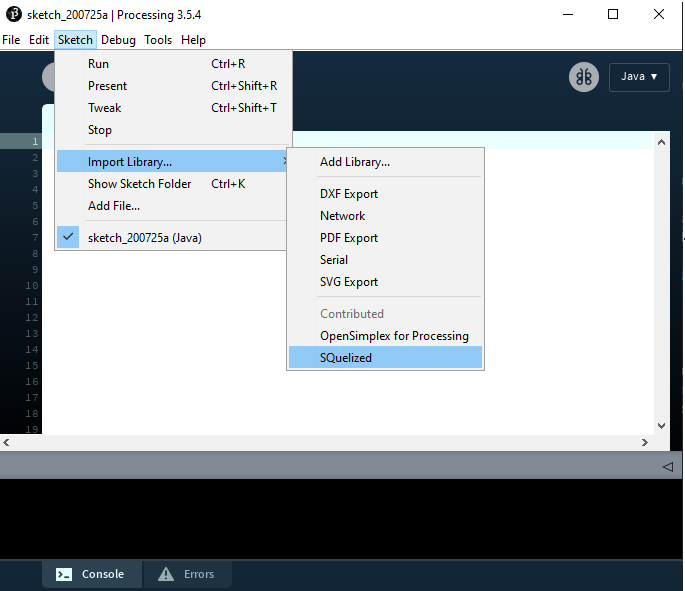Quick Start
Everything you need to get started right away
1. Download the files
Download the SQuelized library files into your computer.
Unzip and put the extracted SQuelized folder into the libraries folder of your Processing sketches.
In a Windows System, it
is usually found in C:\Users\User\Documents\Processing\libraries
2. Verify Setup
To verify that the installation was done correctly, open your latest version of Processing PDE. Under the menu Sketch, select Import Library and check that SQuelized appears on the list. If it does, then everything was done correctly. If it doesn't, then you probably did not copy the files to the correct folder. Check the steps above.

3. Import the library
Import the library into your sketch. To do this, either use the above-mentioned menu to import the library by clicking on SQuelized or manually import it by adding the corresponding import statement.
4. Connect to a database!
Now you are finally ready to connect to a database! To establish a connection to a local MySQL server, instantiate a MySQLConnection object with the proper parameters. Use this SQLConnection object to communicate with your database through queries and other predefined methods. Learn more by reading the documentation and the reference. Happy coding!